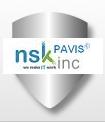Summary
A recent study discovered that, of companies experiencing a "major loss" of computer records, 43 percent never reopened, 51 percent closed within two years of the loss, and a mere 6 percent survived over the long-term[1] For small and medium-sized businesses (SMB's) in particular, these statistics suggest the necessity of crafting a Business Continuity Planning (BCP) strategy grounded in a robust data backup and recovery solution.
Unlike enterprises, many smaller companies cannot afford optimal in-house strategies and solutions in service of BCP. These companies are consequently at an elevated risk of being put out of business due to any major loss of data. Loss of data could mean emails lost, accounting data lost, patient or client files lost, company records lost, client legal records or orders lost and so on. This white paper evaluates the scope of BCP for smaller companies, by examining their challenges, range of existing solutions and their drawbacks. We'll also discuss how our solution overcomes commonly faced challenges to offer the most comprehensive solution out in the marketplace.
Business Continuity Planning for Small and Medium Size Businesses
BCP is the blueprint for how businesses plan to survive everything from local equipment failure to global disaster. Data-oriented BCP, an indispensable component of business planning regardless of organization size, poses the following challenges. Smaller businesses generally lack the in-house IT resources to achieve these demanding planning, technical and process requirements. Therefore, many SMBs either neglect to implement any data-oriented business continuity plan or else approach data backup and recovery in a sporadic, rudimentary fashion that fails to conform to the best practices of BCP.
Understanding the risks of not having a plan in place:
- Understanding Regulatory Compliance requirements in your industry. Regulations such as the Healthcare Insurance Portability and Accountability Act (HIPAA) and the Gramm-Leach-Bliley Act (GLBA) and other laws- state and federal.
- Understanding how to mitigate the risk of losing vital business data, such as customer records.
- Being aware of the environmental hazards that the business infrastructure is exposed to due to your geographical location.
- Estimating time it would take to build the business back if disaster strikes without having any BCP in place.
- Understanding ROI for having a BCP in place.
Technical Challenges:
- Identify the lowest-cost, highest-performance data backup medium (tape or disk) based solution and keeping abreast with the latest and greatest in the industry.
- Ensure that all backed-up data is encrypted and otherwise safeguarded from theft.
- Ensure that backed-up data can be restored to different kinds of hardware.
- Ensure that data backup continues even during active recovery phases.
Operational Challenges:
- Identifying what data to back up.
- Identifying how frequently to back up and related costs and ROI.
- Retain the ability to recover not only the most recent data, but also data from older time horizons, such as past quarters and years.
- Retain the ability to monitor and manage the integrity of ongoing data backup processes so that backup failures can be diagnosed and remedied before adversely impacting the BCP lifecycle.
- The need to hire Staff who can understand, design, implement and keep a BCP running 24/7 and be available to get business back in action after disaster strikes.
Traditional Solution vs. Emerging Technology
Implementing a data-oriented BCP strategy first requires designation of a specific data storage medium. Magnetic tape and disks are the two leading media for data backup storage. While magnetic tape is currently dominant, analyst Dave Russell of Gartner believes that "Recovery will move to online disk-based storage in the future. This will cause a major shift in the backup market during the next four to five years."[2]
Smaller Companies in particular will benefit from the shift, as recent advances in design and manufacturing lower the total cost of disk-based storage in terms of storage per bit. Falling prices, combined with the various performance advantages that storage industry analysts cite, render disk increasingly attractive. Gartner Group highlights the suitability of disk for these organizations by explaining that, "The need for high-performance online recovery of data, combined with the availability of low-cost disk arrays, has influenced enterprises and small and midsize businesses to adopt a disk-based approach for backup and recovery."[3]
Tape, in contrast to disk, is physically delicate and easily compromised by environmental factors such as heat, humidity, and magnetic interference. Moreover, tape cartridges must be replaced frequently (every 6-12 months). Tape's innate sensitivity contributes to high failure rates, with analysts estimating that anywhere from 42 to 71 percent of tape restores fail. Even when magnetic tape backups are successful, tapes themselves are subject to loss or theft, and may be in the possession of an employee or vendor unable to reach a recovery site. Thus, even when physical backup and restoration processes succeed, tape may not prove to be as timely and appropriate a medium for data storage as disk. Time is a crucial consideration because each hour of server, application, and network downtime endured until data restoration comes at a high cost, especially to smaller businesses.
Analyst Jon Oltsik of Enterprise Strategy Group also points out that tape is seldom encrypted, compounding the destructive impact of tape theft: "Very few people encrypt backup tapes, which means that they rely on the security of the backup and off-site rotation process."[4] Magnetic tape encryption, unlike disk encryption, has historically been too costly for all but large enterprises: "Encryption of any data that is leaving the security of the data center, in transit, has always been an option, unfortunately, a very expensive option," explains Clipper Group.[5]
Disk offers not only lower cost encryption but also other advantages. In contrast to tape, "disks are more durable, last longer, withstand more overwriting and you don't need to clean any heads," according to Rinku Tyagi of PCQuest. Additionally, "When it comes to backing up using disks, they are easier to manage. Disk backup systems include management tools, often browser-based, for you to easily configure settings and check status from anywhere."[6]
HP enumerates other advantages of disk storage, noting that "Data is backed up to disk much faster than tape, which translates to less impact on production server availability. Disk is also a more reliable media than tape and less prone to error, which translates to less failed recoveries."[7] Clipper Group believes that the superior speed of disk storage is an enduring advantage: "High performance disk will always be the choice for online applications that require fast access."[8]
While disk offers advantages over tape, it is not a universal remedy. After installing disk technology, Companies will still be responsible for monitoring and managing backup processes, encrypting and safeguarding backed up onsite and offsite data, restoring data to new hardware, and other functions. Without implementing a layer of governance over disk-based data backup, these Companies court the danger of failed backups and delayed restoration of data, thereby jeopardizing their chances of successful recovery from major data loss.
Smaller Companies unable or unwilling to invest in the human expertise and infrastructure support systems necessary for data-oriented BCP can leverage our data backup and recovery solution, which removes cost and complexity burdens from your staff.
~~~~~~~~~~~~~~~~~~~~~~~~~~~~~~~~~~~~~~~~~~~~~~~~~~~
A Complete Solution that addresses all of your BCP Needs - PAVIS
References
[1] Cummings, Maeve; Haag, Stephen; and McCubbrey, Donald. 2003. Management information systems for the information age. http://highered.mcgraw-hill.com/sites/0072935863/information_center_view0/.
[2] Russell, Dave. 2007. Recovery will move to disk-based, manager of managers approach by 2011. Gartner Group. http://www.gartner.com.
[3] Russell, Dave. 2007. Recovery will move to disk-based, manager of managers approach by 2011. Gartner Group. http://www.gartner.com.
[4] Jon Oltsik, quoted in Shread, Paul. 2005. Bank's tape loss puts spotlight on backup practices. Internetnews.com. http://www.internetnews.com/storage/article.php/3486036.
[5] Reine, David. 2007. Security for small data centers-right-sizing tape encryption. Clipper Group. http://www.clipper.com/research/TCG2007036.pdf.
[6] Tyagi, Rinku. 2006. What's for your backup: Disk or tape? PCQuest. http://www.pcquest.com/content/technology/2006/106092501.asp.

